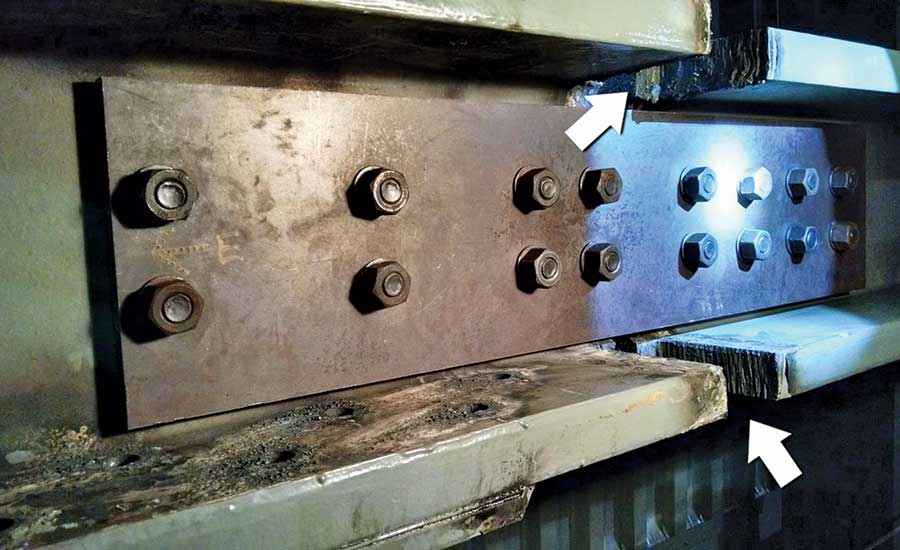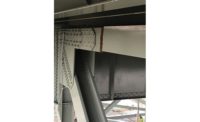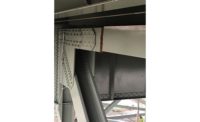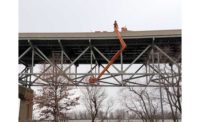The team temporarily stabilizing the Delaware River Bridge and planning its permanent repair also are trying to find a precedent for the bridge’s uncommon fracture. Connecting the Pennsylvania and New Jersey turnpikes, the 61-year-old symmetrical truss bridge was shut down indefinitely on Jan. 20, when a complete fracture in a steel truss was discovered below the bridge deck.
Gary Graham, assistant chief engineer for the Pennsylvania Turnpike Commission, said bridges typically stretch or bow before snapping. “It requires all the more investigation in trying to determine exactly what happened because there isn’t a whole lot of past examples,” he says.
Engineers are evaluating the structure to establish a timeline for the permanent repair. Meanwhile, eight steel plates are temporarily connecting the fracture to stabilize the 1.5-mile bridge while 42,000 vehicles are rerouted each day. “It was a lot of shimmying back and forth, trying to get the plates to fit,” says Brad Heigel, commission chief engineer.
Heigel, who has no cost estimate for the temporary stabilization, said the crack likely was caused by a combination of factors, including age and plug welds that were commonly used in the 1950s to fill mistakenly drilled holes. Heigel said they are “scouring” drawings to determine why the holes are there. They also hope forensic research at Lehigh University will determine if the holes were made in the shop or in the field. “We’re trying to understand if this could potentially exist elsewhere,” Heigel says.
Crews are monitoring the bridge with LIDAR, and a team from the University of Notre Dame will use high-definition video equipment to determine microscopic movements in the bridge. Several engineering consultants have been hired, as well.
Graham said the 6,571-ft-long bridge, constructed in 1956 by the American Bridge Division of U.S. Steel, contains four or five different types of bridge structures and includes two main support trusses. Located in a top chord member of the north support truss, the cracked member is a 27-ft-long I-beam that is about 80 ft above ground on the Pennsylvania side of the bridge.
Given that the bridge was inspected late last year, Graham said the crack likely occurred within the past two months. It was spotted during a $123-million painting and repair operation.
Further, the fracture caused the bridge to sink by about an inch. Crews currently are building eight 80-ft-tall temporary steel towers that will be used for an upcoming jacking procedure. Heigel said one 600-ton jack likely will be used on each tower. The jacks will move independently of one another. First, the crew will install sensors and strain gauges to monitor how the members react to the jacking. “We have a lot of things working in parallel, trying to determine the various what-if scenarios that could occur,” Heigel says. He also said the project team is “identifying members we think we will need to take a look at once we get this thing back to its original geometry.”






Post a comment to this article
Report Abusive Comment